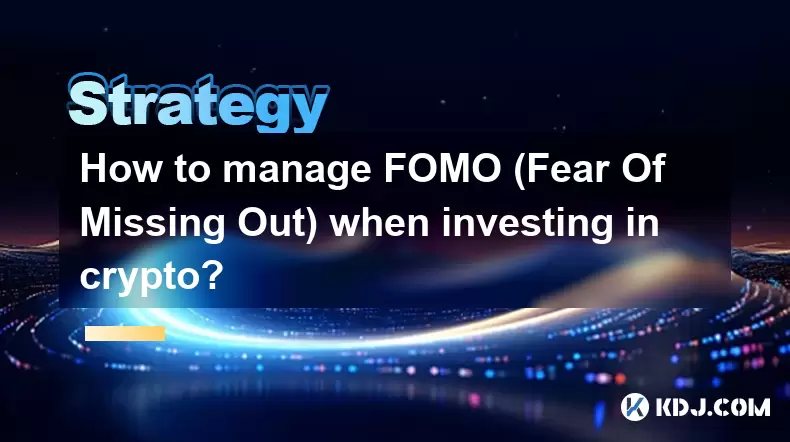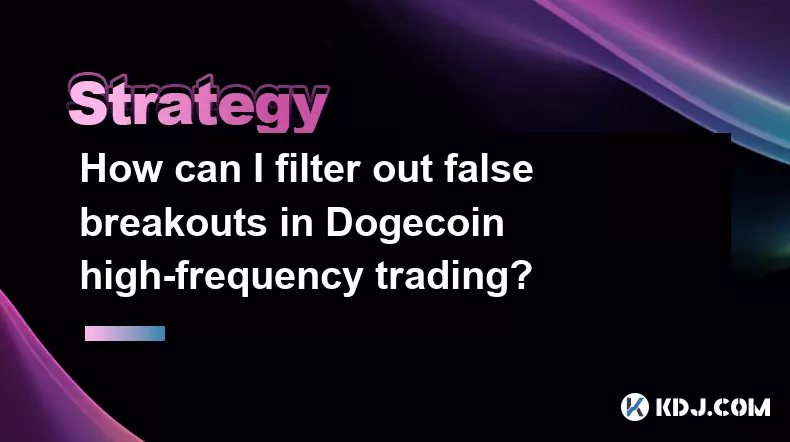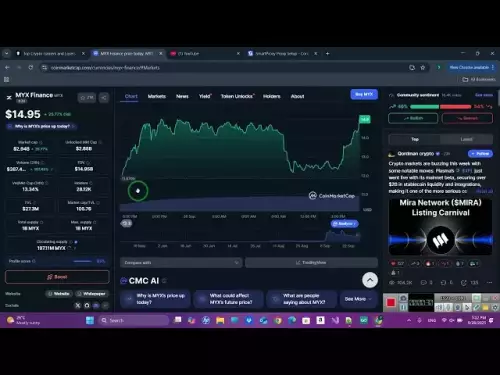-
 bitcoin
bitcoin $109547.008142 USD
0.04% -
 ethereum
ethereum $4011.838726 USD
-0.05% -
 tether
tether $1.000402 USD
-0.01% -
 xrp
xrp $2.798606 USD
0.88% -
 bnb
bnb $970.877944 USD
1.39% -
 solana
solana $202.237275 USD
-0.95% -
 usd-coin
usd-coin $0.999673 USD
0.00% -
 dogecoin
dogecoin $0.229294 USD
-1.15% -
 tron
tron $0.336370 USD
-0.45% -
 cardano
cardano $0.777260 USD
-1.66% -
 hyperliquid
hyperliquid $45.503019 USD
1.73% -
 ethena-usde
ethena-usde $1.000362 USD
0.01% -
 chainlink
chainlink $20.785303 USD
-1.10% -
 avalanche
avalanche $28.755822 USD
-0.11% -
 stellar
stellar $0.358303 USD
-0.48%
How to manage FOMO (Fear Of Missing Out) when investing in crypto?
FOMO in crypto investing often leads to impulsive decisions, driven by social media hype and fear of missing out on quick gains.
Jul 15, 2025 at 10:07 pm

Understanding FOMO in the Context of Crypto Investing
FOMO, or Fear Of Missing Out, is a psychological phenomenon that affects investors across all markets, but it is particularly pronounced in the cryptocurrency space due to its volatile and fast-moving nature. When prices surge rapidly or new projects gain hype overnight, many investors feel pressured to jump in without fully understanding what they're buying. This emotional reaction often leads to poor decision-making and significant losses.
In crypto, FOMO can manifest in several ways: rushing into a token sale without researching the team behind the project, buying altcoins just because they are trending on social media, or investing more than one can afford to lose simply to 'not miss out.' Recognizing these patterns is the first step toward managing them effectively.
The Psychological Impact of Social Media and Influencers
One of the biggest contributors to FOMO in crypto is social media exposure. Platforms like Twitter, Reddit, and Telegram are filled with real-time updates, price predictions, and investment tips from both seasoned traders and self-proclaimed experts. While some information is valuable, much of it is speculative or driven by marketing campaigns.
The influence of crypto influencers cannot be understated. Many individuals with large followings promote certain coins or tokens without disclosing their own financial interests. Seeing others make quick profits or hearing success stories can create unrealistic expectations and drive impulsive behavior.
To combat this, investors should take a step back and assess whether their decisions are based on logic and research or simply peer pressure and excitement. Limiting exposure to overly hyped content and focusing on verified sources can help reduce emotional interference in trading.
Setting Clear Investment Goals and Strategies
One of the most effective ways to manage FOMO is by defining clear investment goals. Ask yourself: Why are you investing in crypto? Is it for long-term wealth building, short-term gains, or diversification? Having a well-defined strategy makes it easier to filter out noise and avoid chasing every trend.
Consider setting up the following:
- A risk tolerance level that dictates how much you're willing to lose.
- Entry and exit points for each investment.
- Allocation limits per asset to avoid overexposure.
By sticking to your plan, you’re less likely to be swayed by market hype or sudden price surges. The key is consistency — if your strategy says not to invest in something unless it meets specific criteria, don’t deviate just because others are doing it.
Implementing Technical Tools to Avoid Emotional Trading
There are several technical tools and features available on crypto exchanges that can help mitigate FOMO-driven trades. One such feature is the use of stop-loss and take-profit orders. These allow you to automate exits based on predefined conditions, reducing the need to constantly monitor the market or panic-sell during downturns.
Another helpful tool is portfolio tracking apps that provide real-time insights into your holdings and performance. These apps can also send alerts when certain thresholds are reached, helping you stay informed without needing to obsessively check prices.
Additionally, consider using trading journals to document every trade you make. Writing down your rationale before entering a position forces you to think critically and reduces the likelihood of acting impulsively. Over time, this practice builds discipline and helps identify behavioral patterns that may be influenced by FOMO.
Building a Supportive Network and Seeking Trusted Information
Surrounding yourself with a knowledgeable and rational community can significantly reduce the impact of FOMO. Joining groups or forums where members share research, analysis, and personal experiences can provide a balanced perspective. Look for communities that emphasize education and critical thinking rather than hype.
Avoid echo chambers where everyone blindly follows trends or promotes certain coins without scrutiny. Instead, engage with reliable sources such as whitepapers, developer activity, and on-chain analytics. Reading the original documentation of a blockchain project or analyzing wallet movements can offer deeper insights than superficial social media posts.
If possible, consult with experienced mentors or financial advisors who understand the crypto landscape. Their guidance can help you distinguish between legitimate opportunities and speculative bubbles, making it easier to resist the urge to chase every new trend.
Frequently Asked Questions (FAQ)
Q: Can FOMO ever be beneficial in crypto investing?A: While FOMO can sometimes lead to profitable investments, it’s generally considered a dangerous emotion in trading. Acting on fear or excitement rather than analysis increases the risk of poor decisions. It’s better to approach investments with a calm, strategic mindset.
Q: How do I know if I’m experiencing FOMO while trading crypto?A: Signs include rushing into trades without research, feeling anxious when not actively monitoring the market, or buying assets solely because others are talking about them. If your actions are driven by emotion rather than logic, you may be experiencing FOMO.
Q: Are there any apps designed specifically to help manage FOMO in crypto?A: While no app directly targets FOMO, portfolio management tools like Blockfolio, CoinMarketCap, or Delta can help track investments and set alerts. Using these tools can reduce anxiety and prevent reactive trading.
Q: Should I completely avoid trending cryptocurrencies to prevent FOMO?A: No, but you should approach trending assets with caution. Always conduct thorough research before investing. Just because something is popular doesn’t mean it’s a good investment. Stick to your strategy and only invest if it aligns with your goals.
Disclaimer:info@kdj.com
The information provided is not trading advice. kdj.com does not assume any responsibility for any investments made based on the information provided in this article. Cryptocurrencies are highly volatile and it is highly recommended that you invest with caution after thorough research!
If you believe that the content used on this website infringes your copyright, please contact us immediately (info@kdj.com) and we will delete it promptly.
- Snorter Bot: Your Ticket to 100x Crypto Presale Gems?
- 2025-09-29 06:25:16
- XRP Payments, Daily Wages, and Ripple Chief: A Revolution in Payroll?
- 2025-09-29 06:25:16
- XRP, Ripple, and the SWIFT Payments Revolution: A New Era?
- 2025-09-29 06:30:01
- RedotPay, Stablecoin, and Investment: A New Era of Digital Finance?
- 2025-09-29 06:30:01
- MoonBull: The Crypto to Watch in Q4 2025 for APY Rewards
- 2025-09-29 06:30:01
- MoonBull Presale: The Meme Coin Opportunity You Can't Miss (NY Edition)
- 2025-09-29 06:30:12
Related knowledge

Practical parameter settings for a Bitcoin multi-timeframe moving average system
Sep 18,2025 at 10:54pm
Optimizing Timeframe Combinations for Bitcoin Trading1. Selecting appropriate timeframes is crucial when building a multi-timeframe moving average sys...

How can I filter out false breakouts in Dogecoin high-frequency trading?
Sep 22,2025 at 01:00am
Understanding False Breakouts in Dogecoin Trading1. A false breakout occurs when Dogecoin's price appears to move beyond a defined support or resistan...

Techniques for identifying tops and bottoms in the Bitcoin on-chain NVT model
Sep 20,2025 at 07:54pm
Understanding the NVT Model in Bitcoin Analysis1. The Network Value to Transactions (NVT) ratio is often described as the 'P/E ratio' of the cryptocur...

What does the surge in open interest in Bitcoincoin futures mean?
Sep 20,2025 at 11:18pm
Understanding the Surge in Dogecoin Futures Open Interest1. A surge in open interest within Dogecoin futures indicates a growing number of active cont...

How can I use the Ethereum USDT premium to gauge market sentiment?
Sep 18,2025 at 11:55pm
Understanding the Ethereum USDT Premium1. The Ethereum USDT premium refers to the price difference between USDT (Tether) traded on Ethereum-based plat...

What should I do if Ethereum staking yields decline?
Sep 20,2025 at 06:18am
Understanding the Causes Behind Declining Ethereum Staking Yields1. The Ethereum network transitioned to a proof-of-stake consensus mechanism with the...

Practical parameter settings for a Bitcoin multi-timeframe moving average system
Sep 18,2025 at 10:54pm
Optimizing Timeframe Combinations for Bitcoin Trading1. Selecting appropriate timeframes is crucial when building a multi-timeframe moving average sys...

How can I filter out false breakouts in Dogecoin high-frequency trading?
Sep 22,2025 at 01:00am
Understanding False Breakouts in Dogecoin Trading1. A false breakout occurs when Dogecoin's price appears to move beyond a defined support or resistan...

Techniques for identifying tops and bottoms in the Bitcoin on-chain NVT model
Sep 20,2025 at 07:54pm
Understanding the NVT Model in Bitcoin Analysis1. The Network Value to Transactions (NVT) ratio is often described as the 'P/E ratio' of the cryptocur...

What does the surge in open interest in Bitcoincoin futures mean?
Sep 20,2025 at 11:18pm
Understanding the Surge in Dogecoin Futures Open Interest1. A surge in open interest within Dogecoin futures indicates a growing number of active cont...

How can I use the Ethereum USDT premium to gauge market sentiment?
Sep 18,2025 at 11:55pm
Understanding the Ethereum USDT Premium1. The Ethereum USDT premium refers to the price difference between USDT (Tether) traded on Ethereum-based plat...

What should I do if Ethereum staking yields decline?
Sep 20,2025 at 06:18am
Understanding the Causes Behind Declining Ethereum Staking Yields1. The Ethereum network transitioned to a proof-of-stake consensus mechanism with the...
See all articles










































































